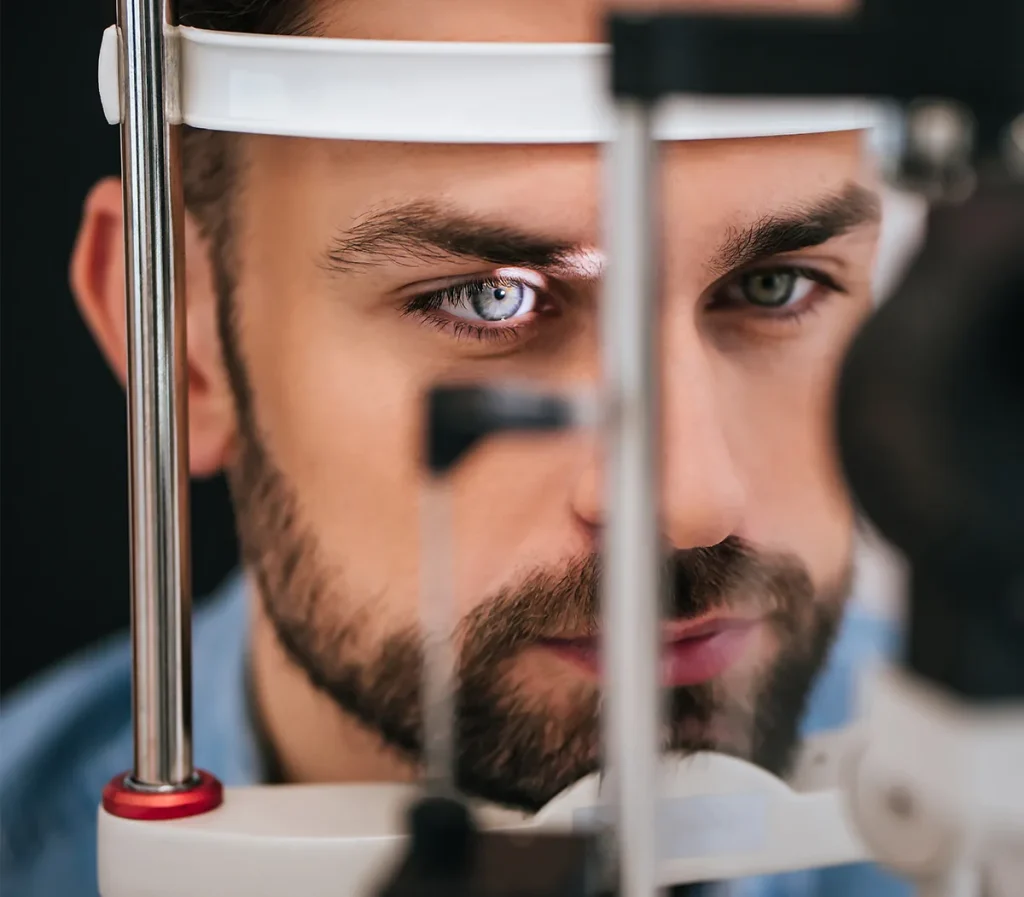
Retinal Diseases
The retina and macula specialists at Cincinnati Eye Institute are extensively trained in the diagnosis and treatment of a full range of retinal disorders and diseases.
At Cincinnati Eye Institute, we provide state-of-the-art treatments designed to preserve and protect the vision of individuals diagnosed with retinal diseases.
Cystoid Macular Edema
Cystoid macular edema is a result of swelling or inflammation of the delicate macula, which causes decreased central vision. Treatments for cystoid macular edema include anti-inflammatory eye drops, injections, and surgery.
Diabetic Retinopathy
Diabetic retinopathy may affect people with diabetes, a condition that impacts the body’s processing of blood sugar. There are multiple stages and symptoms associated with diabetic retinopathy, which results from damage to the blood vessels of the retina. It is especially important for people with diabetes to undergo regular eye examinations, as early diagnosis and treatment of diabetic retinopathy is key to preventing vision loss.
Flashes & Floaters
Seeing flashes of light or dark spots in the visual field is a relatively common visual disturbance. The appearance of flashes and floaters is caused by changes in the vitreous gel. While they are often harmless, they can also be a symptom of a retinal tear or retinal detachment. For this reason, it is important to have your eyes thoroughly examined if you experience this type of visual disturbance.
Intravitreal Injections
Intravitreal injections are a medical procedure where medication is directly delivered into the eye’s vitreous, near the retina, to treat various eye diseases. This treatment is essential for managing conditions such as age-related macular degeneration, diabetic retinopathy, and retinal vein occlusion. It helps in reducing swelling, stopping disease progression, and improving vision.
Macular Degeneration
Age-related macular degeneration, or AMD, is caused by thinning of the macula and can cause blind spots, changes to the way a person sees colors, distorted vision, and/or central vision loss. This is the leading cause of age-related vision loss.
Macular Hole
When the aging vitreous pulls away from the retina, it can cause a hole in the macula. Macular holes can cause a variety of visual disturbances, including blurred central vision and the perception that straight lines are wavy. This can impede daily tasks and reading and may be treated with surgery.
Macular Pucker (Epiretinal Membrane)
Shrinking of the vitreous is a natural part of the aging process, and can lead to the development of scar tissue that may cause the macula to wrinkle or pucker. This may also be referred to as an epiretinal membrane. Macular puckers can cause visual disturbances and distortion. They may resolve on their own, however in some cases surgery is required to treat a macular pucker.
Retinal Detachment
When the retina separates from the wall of the eye, a retinal detachment is diagnosed., Symptoms may include sudden onset of new floaters, bright flashes, shadows, or loss of vision. Retinal detachment may be the result of a trauma or injury to the eye or may be related to other eye conditions such as inflammation, extreme nearsightedness, or prior eye surgeries. Once a retinal detachment is diagnosed, urgent treatment may be needed in order to preserve vision.
Retinal Laser Treatment
Retinal laser surgery can be used slow or prevent the growth of blood vessels in the vitreous or in the retina. This procedure may be used to treat retinal detachment or tears, macular degeneration, or diabetic retinopathy.
Retinal Tear
A tear in the retina can be a result of aging or after an injury or surgery to the eye. This condition can cause flashes or shadows in the vision and must be treated promptly, before a retinal detachment occurs.
Retinal Vein Occlusion
The retina contains many small blood vessels, which carry nutrients and oxygen to and from the eye. Retinal vein occlusion (RVO) is the blockage of a retinal vein. Patients with RVO may have sudden, painless loss of vision in one eye. Treatments are available for RVO, including retinal lasers or injections of medications into the eye. It is very important for people with risk factors such as inflammatory eye conditions, high blood pressure, cardiovascular, glaucoma, or diabetes to receive regular eye examinations and preventive care.
Uveitis
Uveitis refers to the swelling of the eye’s middle layer and may impact the vitreous, optic nerve, lens, and retina. Symptoms include blurred vision, floaters, eye redness, and discomfort. Uveitis could lead to loss of vision if not managed by a skilled ophthalmologist.
Vitrectomy
The eye surgery to remove vitreous gel is known as vitrectomy. This procedure may be performed in cases of vitreous hemorrhage, retinal detachment, a macular hole, severe floaters, or other conditions of the retina or macula.
Vitreous Hemorrhage
Blood vessels are not present in healthy vitreous gel, but may grow as a result of certain conditions including diabetic retinopathy and carotid artery disease. Bleeding in the vitreous caused by a ruptured blood vessel can lead to vision loss and may be treated with retinal laser photocoagulation or vitrectomy surgery.
Contact CEI for Treatment of Macular and Retinal Diseases
Healthy retinas are vitally important to clear vision. Cincinnati Eye Institute has a robust team of specialists with deep experience and extensive training in the diagnosis and management of a full range of retinal and macular diseases.
The doctors at Cincinnati Eye Institute have either authored or reviewed the content on this site.











